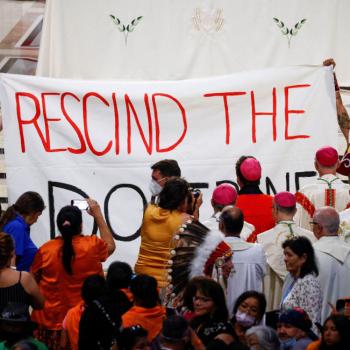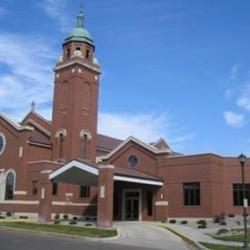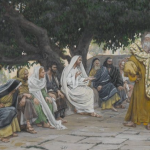
“Jesus was not about social justice.” “The Gospel of Luke is a social justice Gospel, but the Gospel of Mark not so much.” But I have written 23 posts in a series on social justice in Mark’s Gospel! So much for “Jesus is not about social justice.” But now Luke beckons, and I have been wondering where to start. I guess, start where I am, and just now I’m with a New York Times article on cancel culture. Cancel culture and restorative justice. Cancel culture is about the opposite of forgiveness, and forgiveness and reconciliation are the essence of restorative justice.
Forgiveness and restorative justice versus cancel culture is the theme of this first post on social justice in the Gospel of Luke. It’s also the theme of one of Jesus’ parables that Luke records. The Parable of the Two Debtors and the situation that occasions Jesus telling it make a profound statement. It comes into the Times article, “Where Is the Forgiveness and Grace in Cancel Culture?” Later in this post I will suggest that we have to stop calling a certain class of sinners “Karens.”
Kenneth E. Bailey in Through Peasant Eyes analyzes many of Jesus’ parables. That book and its companion Poet and Peasant, published in a single volume will be sources I will use in several posts on social justice in Luke. Another source, more directly aiming at social justice in the Gospel of Luke, is John Howard Yoder’s The Politics of Jesus. (But see the cautionary note on Yoder at the end of this post.)
Yoder doesn’t deal with the Two Debtors parable, but Bailey has a thorough analysis. It makes an interesting story about Jesus, a Pharisee, and a woman. The interactions among these three may be a bit too subtle for modern minds. Not so for a participant in the culture of Luke’s time and place, as Bailey’s analysis shows.
A sinner kisses Jesus’ feet and receives forgiveness (Luke 7: 36-50)
Here’s the story in a nutshell:
A Pharisee named Simon invites Jesus over for dinner. He doesn’t give Jesus the customary welcome to an honored guest – a kiss, a foot washing, and an anointing. But a woman, a known sinner, does all of these things, to Jesus’ feet, with tears, her hair for a towel, and some expensive perfume. Simon thinks Jesus must not be much of a prophet if he doesn’t know what kind of woman this is. Then Jesus tells the following parable:
A certain creditor had two debtors; one owed five hundred denarii, and the other fifty. When they could not pay, he canceled the debts for both of them. Now which of them will love him more?
The Pharisee concedes that it would be the one who was forgiven more. Jesus proceeds to point out how the woman makes up for Simon’s negligence. Jesus assures the woman (and the indignant Pharisee) that her sins are forgiven. “Your faith has saved you; go in peace.”
This is a lesson on forgiveness for one who repents. Without help, that’s about all I get out of reading the parable. Bailey shows me more.
Digging deeper
Bailey points out, to my surprise, that Jesus didn’t forgive the woman’s sin. He says her sins “are forgiven.” That may have happened before the drama in Simon’s house took place. With some imagination Bailey reconstructs a likely scenario to explain how Jesus, the Pharisee, and the woman managed to get together: Jesus has been preaching on the topic of a forgiving, loving God. There’s a woman in the crowd who is probably a prostitute. We can make this guess because the town knows her as a sinner and she happens to have an alabaster jar of ointment. This perfumed oil would be a necessary tool in a prostitute’s trade.
In the course of hearing Jesus’ preaching, the women is struck to the heart. She understands God is actually forgiving her! She decides to give up her trade. (Incidentally, that may be harder than it sounds. I’ve written about another prostitute here.) But that can’t be all. She is moved to do something to show her gratitude to God through God’s agent, Jesus. Some hasty inquiries give her the information that a certain Pharisee has invited Jesus over to his house. Having decided what to do, she runs home or to her place of business and grabs the jar of ointment, probably the most expensive thing she owns. She hurries over to Simon’s house, and that’s where Luke picks up the story.
The woman at the house of the Pharisee
That a woman could find a place at Jesus’ feet in a Pharisee’s house isn’t as improbable as it sounds. Having researched cultures that have changed little over the centuries and may still be close to that of first-century Palestine, Bailey explains: “In an Oriental banquet, the door of the house is open and there is a great deal of coming and going.” (Through Peasant eyes, p. 7) There is a long, low table and, perhaps, couches or cushions on which guests lie on their left sides with knees bent, feet behind. Onlookers and servers would be standing behind all these feet.
Protocol for the host of such a banquet calls, first, for greeting guests with a kiss. For guests of equal status, it’s a kiss on both cheeks. Simon address Jesus as Rabbi, or teacher. Whether in sarcasm or seriously, this address implies that Jesus is of superior rank. In that case the kiss should be on the hands. The formerly sinful woman can’t imagine performing either of these acts. She can only kiss Jesus’ feet.
Proper for an especially honored guest is an anointing on the head with olive oil. The woman, not being quite proper can only anoint Jesus’ feet, but she has a supply of perfumed oil, which she doesn’t need anymore. It’s about a hundred times more expensive than olive oil. I may be exaggerating a bit, but even so the shamed woman puts the party’s host to shame.
Before the kissing and the anointing there needed to be the washing of feet. The woman was prepared with the right equipment for the anointing and, of course, for the kissing. But she wasn’t ready for the washing. All she had for water was her grateful tears, which seemed to be plentiful enough. But what can she dry Jesus’ feet with. She does the unthinkable around a bunch of men in public. Shocking Simon and all the guests but one, she lets down her hair.
The Pharisee
What kind of person is Simon? He may have been ambivalent about Jesus. Listening to Jesus’ speech earlier, he may have wanted to have a conversation in a more private setting. He could probably enlighten Jesus on a few points. He didn’t do his customary duty as Jesus’ host, but there may have been a reason for that. Jesus often mixed with the wrong sort, touching lepers, talking with women. One couldn’t trust Jesus to be ritually pure. For a purity-obsessed Pharisee, touching Jesus wasn’t safe.
Bailey’s judgment is harsher. We could, he says, imagine Simon as the debtor who owed little, i.e., the sinner who sinned little. So only a little of God’s grace is needed “to cover these ‘debts.’” But more likely the message of Jesus’ parable is, “You, Simon, have many sins…. You have little awareness of them and have not repented. Thus you have been forgiven little and, naturally, loved little.” Among Simon’s many sins, Bailey lists: “pride, arrogance, hard-heartedness, hostility, a judgmental spirit, slim understanding of what really defiles, a rejection of sinners, insensitivity, misunderstanding of the nature of God’s forgiveness, and sexism.” (p. 18)
Simon wasn’t ready for Jesus’ message about forgiveness. We wonder if Jesus’ parable helped him changed his mind, but the story doesn’t tell us. Other guests, though, seem unlikely candidates for conversion. They hear Jesus’ assurance to the woman, “Your sins are forgiven,” and murmur, “Who is this who even forgives sins?” Maybe they deliberately misinterpret Jesus’ statement. Or, as I think, they’re committed to the division of roles in society that says only priests can declare a person free of leprosy, debt, and other “sins.” (In that sense, the priests “forgive” sins.) They resent Jesus for sidelining the priest, disrupting the system – just like any social justice agitator.
Cancel culture
Someone invented the name “Karen” for a certain type of sinner, creating a category from which it’s nearly impossible to escape. A Philadelphia Magazine article headlines: “Karens are Dangerous. We Need to Cancel Karen Culture Now.” The article gives a description of Karens – “racist people who weaponize white supremacy against Black people.” I agree with “canceling” that element of our culture. But I fear the kind of canceling that becomes its own culture – cancel culture.
It’s important to say that I do not agree that cancel culture includes the movement to remove statues honoring Confederate figures. There are many historical figures whom we know primarily as upholding the supremacy of whites over people of color. They should not receive the honor of a statue displayed where people can’t avoid seeing it. History books and museums are places that can tell these historical figures’ stories, including their misdeeds, appropriately.
Cancel culture is the culture that treats individuals who have done bad things, including discriminatory and racist things, as irredeemable. It’s the Pharisee Simon’s attitude toward sinners. It’s shunning people from polite society, denying them the chance to rethink, repent, start over. A sure sign that this attitude lives in society today is the use of the word “Karen.” We don’t know the people that we, liberals mostly, give this name to; yet we put them in a box and label it. Forgiveness is out of mind, out of the realm of possible things, even out of order.
My thought: We should name the sin. In some cases we need to follow with consequences. We can do both while respecting persons and without labeling. Most important, forgiveness needs to be available and readily offered. As with the prostitute in Luke’s story, that is where repentance and reconciliation starts. That’s restorative justice.
Restorative justice in action
The New York Times article that started this train of thought is titled “Where Is the Forgiveness and Grace in Cancel Culture?” I will end with the memory of recent events that showed the reality, or in some cases only the possibility, of forgiveness and reconciliation.
Charleston Baptist Church murders
On June 17, 2015 Dylann Roof killed nine people at Emanuel African Methodist Episcopal Church in Charleston, N.C. He admitted his motive was to ignite a race war. One of the slain was Myra Thompson, wife of Rev. Anthony Thompson, a pastor at the church. His words to Mr. Roof challenge the all-too-common kind of justice that is really only retribution:
I would just like him to know: I forgive you, and my family forgives you.
Michael Eric Dyson, the article’s author, writes, “The unmerited forgiveness was a powerful gesture in a process known as restorative justice.” This act seeks “accountability from wrongdoers.” It also raises “truth and understanding over punishment and vengeance.” It allows victims to “act as forces of morality by practicing acceptance, absolution and mercy.”
In August a Federal appeals court upheld the death sentence for Dylann Roof. A further appeal was denied. Capital punishment denies any possibility of restorative justice.
A politician in blackface
Should Gov. Ralph Northam have resigned or been forced out of office because of a picture showing him in blackface make-up decades earlier? He didn’t resign and managed to keep his office. That was a backhanded sort of restorative justice, but it worked. Dyson recounts the good things Northam did subsequently for Blacks:
He increased focus on racial justice, paying especially close attention to maternal mortality, equity in transportation and funding for historically Black colleges. He changed how schools teach the history of race, got a Robert E. Lee statue in Richmond removed and restored the voting rights of tens of thousands of felons, a sizable share of them Black.
Where justice could have been better
Amy Cooper, a white woman, falsely claimed to police that a black amateur bird-watcher, had threatened her. Public outcry got her fired from her job, but was that the best consequence?
Dyson suggests she might have kept her job with the stipulation that she study “race, Black masculinity, white privilege and social injustice.” Merely firing her, retributive justice, shamed her without encouraging transformation or reconciliation.
A killing by tragic mistake
Kim Potter is the now-former police officer who shot and killed Daunte Wright with her revolver, thinking that she was using a taser. She will undoubtedly serve several years in prison. For her and other officers who have used unwarranted force, often against Blacks, restorative justice could mean “encouraging them to grapple with the inherent injustice of many of the killings of Black people…. Such an education will not restore her to her job, but it can restore her to conscientious citizenship.”
Remembering Desmond Tutu
South African Anglican cleric Archbishop Desmond Tutu died last Sunday, December 30. He received the Nobel Peace Prize for his work on restorative justice after the years of apartheid and oppression of Blacks in his native country. In his words restorative justice means “the healing of breaches, the redressing of imbalances, the restoration of broken relationships.” It rehabilitates both victim and perpetrator. It gives the criminal a chance “to be reintegrated into the community he has injured by his offense.”
The American criminal justice system is based largely on retribution with feeble, but perhaps growing, efforts at rehabilitation. A new Minnesota law allows women prisoners to apply for “conditional release.” If approved, they can serve sentences in alternative venues like Halfway houses or addiction rehabilitation facilities. They would have “time and space to bond with their children.”
Many states and the federal government have kept the death penalty for, presumably, the most heinous crimes. In capital punishment all I see is a thirst for revenge. Our criminal justice system should be much more Bible-based and forgiveness-based. Restorative justice is a step in that direction.
(Cautionary note on Yoder)
I feel uneasy, but on the whole still justified, in using John Howard Yoder as a source in future posts. The New York Times calls Yoder “America’s most influential pacifist theologian.” In the same article it details Yoder’s egregious sins. He has admitted to inappropriate relations of a sexual nature (though not to intercourse) with several women. The true number may be 50 or more. Yoder died in late December 1997. He had just completed a four-year process of supervision and counseling and been welcomed back to worship at his Mennonite Church. Subsequently there was a recognition of not only Yoder’s failures but also the failures of the institutions where he taught. These included Goshen Biblical Seminary and the University of Notre Dame.
You could say Yoder was a recipient of restorative justice. He wasn’t canceled. rather his influence continued to grow after his death. The Global Anabaptist Mennonite Encyclopedia Online calls him “arguably the most influential Mennonite theologian ever [and] one of the most influential Christian ethicists in the 20th century.”)











